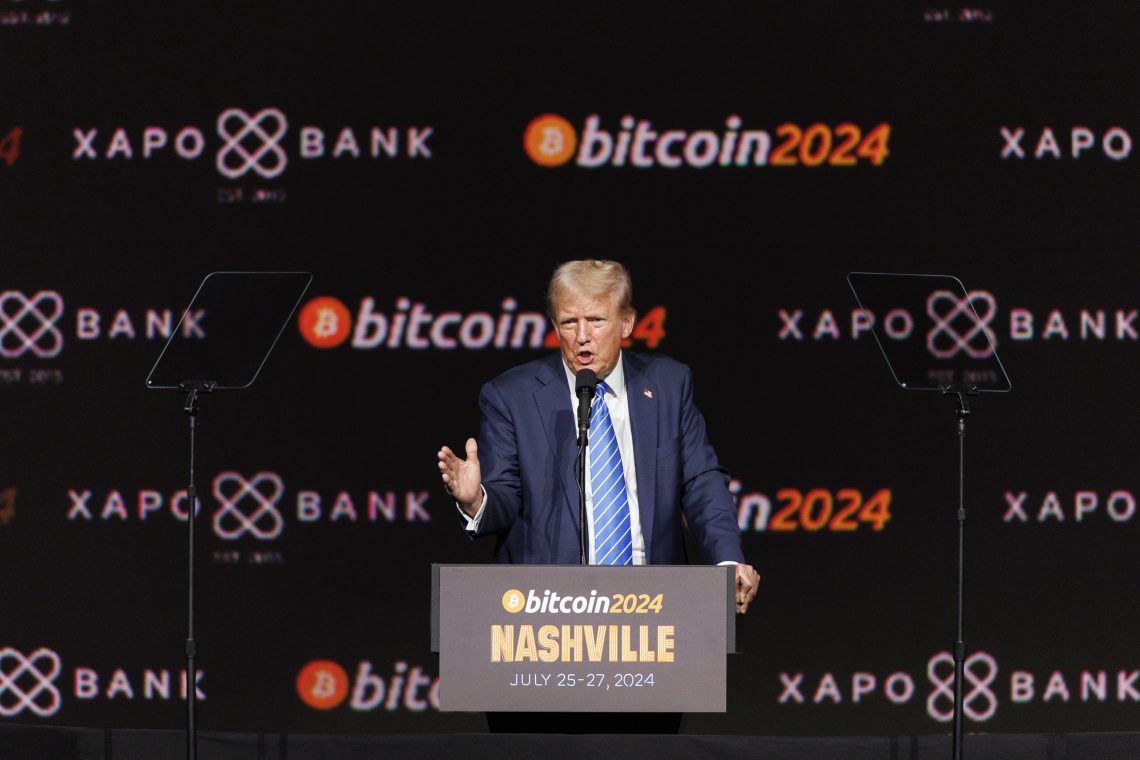Trump’s Pro-Crypto Policies Could Usher in a New Era for Digital Currencies
Advocates of digital currencies are pushing to play a major role in the global economy, a goal that has faced many challenges. Setbacks like the failures of cryptocurrency platforms and the stricter regulations globally have slowed progress. However, a sense of optimism has emerged in the crypto world, driven by recent U.S. election results.
President Donald Trump has vowed to make the U.S. a leader in digital currency. He’s not only starting to fulfill his campaign promises but has also appointed crypto-friendly leaders across several federal agencies.

The new Trump administration, alongside a Republican majority in both the House and Senate, has the potential to give the market for digital assets much-needed clarity. President Trump recently signed an executive order to strengthen the U.S.’s leadership in digital financial technology. This order establishes the position of the country’s first crypto and artificial intelligence czar – a role filled by David Sacks – and calls for a presidential working group.
This group will convene key stakeholders from different government agencies and private sector representatives. They are tasked with advising the president on what a well-crafted, pro-innovation policy should include to maintain U.S. leadership, enhance economic competitiveness, and ensure national security in the face of rapidly advancing technologies.

Sacks quickly began his new mandate. On the same day the bipartisan stablecoin bill known as the GENIUS Act was introduced, he led a press conference with key members of Congress, signaling a new beginning for the industry.
The crypto market has reacted positively to these developments. The price of Bitcoin soared to unprecedented heights, crossing $100,000 in December. The market capitalization of stablecoins (digital coins tied to real money or assets like the dollar and gold) surpassed $200 billion by January, up over 45% year-on-year. Increased institutional adoption has been spurred by the potential for legal and regulatory clarity.
This momentum isn’t exclusive to the United States. Europe has introduced new regulations for crypto assets. Hong Kong is implementing new rules for cryptocurrencies and stablecoins, aiming to be a regional hub for digital assets. Singapore offers straightforward laws and tax incentives, attracting companies like Binance. Brazil and the United Arab Emirates, which has become a leading financial and technology hub in the Middle East, are also becoming involved.
If the international rules for the cryptocurrency market are not harmonized, there’s a significant risk of fragmentation. To achieve this alignment, U.S. leadership is vital.
Regulatory Fragmentation in the U.S.
The U.S. has faced a tug-of-war over cryptocurrency policies, with agencies vying for control. The Securities and Exchange Commission and state-level regulators often pursue conflicting goals, creating confusion for crypto firms and investors. This fragmented approach has real consequences.
National bank policies are changing, but a lack of clarity slows progress. Cryptocurrency has thrived despite U.S. policies, offering alternatives to financial services. The Trump administration and Congress could bring about a shift in this dynamic.
Many central banks worldwide are creating digital versions of their currencies. President Trump’s executive order on digital financial technology stated that Central Bank Digital Currencies (CBDCs) “threaten the stability of the financial system, individual privacy, and the sovereignty of the United States.” He stated that the creation, distribution, and use of a CBDC in the U.S. would be strictly prohibited, positioning the regulation of today’s generation of dollar-denominated stablecoins as the urgent national priority for the U.S. to win the digital currency race.
Opposition to CBDCs
Concerns about privacy regarding Central Bank Digital Currencies (CBDCs) are a key point of opposition. Crypto supporters are wary of CBDCs, worrying about a lack of anonymity. Since a CBDC would leave a digital footprint, those supporting cryptocurrencies are against that. Cryptocurrencies are built on decentralized networks, while CBDCs are issued and managed by central banks, which is a concern for many crypto enthusiasts.
With the U.S. stepping away from public-sector digital money experiments, there’s a growing urgency for digital dollars, previously referred to as payment stablecoins, to come under U.S. regulatory oversight. The GENIUS Act, along with other bills, underscores the growing emphasis in Washington on stablecoin legislation.
Establishing regulations that support dollar-backed stablecoins can be an effective way for the U.S. to succeed in the digital currency market.
In the January executive order, President Trump stated that his administration supports the responsible growth and use of digital assets and blockchain technology. He pledged to ensure that individuals and private entities can access open public blockchain networks without persecution, develop a supportive regulatory framework for emerging technologies, and promote the growth of lawful dollar-backed stablecoins worldwide.


